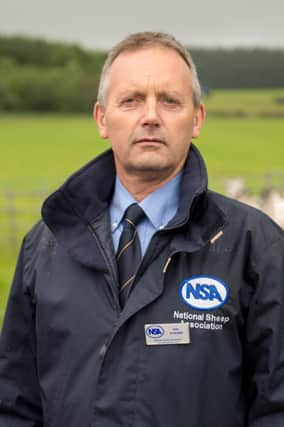Grasslands can play big role in farming's net zero carbon goals


The report, published by Natural England, looks at how UK landscapes can contribute to carbon management, while also offering landscape diversity and opportunities for nature.
In the study woodlands were noted as having high rates of carbon sequestration – depending on the species, age and location, and that old woodland could be harnessed to store even more carbon.
Advertisement
Hide AdAdvertisement
Hide AdHowever farming groups, including National Sheep Association chief executive, Phil Stocker, have warned, “The right tree in the right place is what is crucial and the future will require a mix of climate control, nature recovery and a need to feed ourselves healthily and not ‘offshore’ our footprint to somewhere that is simply out of sight.”
He said that by rewarding farmers for protecting and sustaining important areas such as native woods and peatland, alongside other traditionally managed habitats such as grazed grasslands, waterways, hedgerows, hay meadows, orchards and heathlands would allow the preservation of wildlife and biodiversity within a farmed landscape.Sheep farming across the UK plays an integral role in the delivery of sustainable land management policy, Stocker added.
“Native trees and shrubs, integrated with sheep and grazing animal systems, can support productivity and sheep health and welfare improvements, and provide wider environmental and nature benefits, helping to contribute to the UK meeting its carbon targets.”
Stocker said that future land management schemes, should provide the opportunity for the vast majority of the UK’s farmland to be managed in ways that enhanced soil and nature through the sustainable practices.
But they could also go further, with local nature recovery and landscape enhancement to create and maintain habitats with related net zero benefits.
Meanwhile NFU Scotland vice president, Andrew Connan warned that If Scottish agriculture was to be part of the solution to climate change, there needed to be a re-defined approach to woodland expansion and forestry on agricultural land.
Calling for a re-think on policy he said that the Scottish government’s “current fixation with planting trees” was “naïve at best, certainly short sighted, and having the potential to be damaging in other economic, environmental and social aspects”.
“The more of Scotland’s limited productive land that shifts from farming to forestry, the more we are likely to simply offshore our emissions or even increase our carbon footprint,” he warned.
Advertisement
Hide AdAdvertisement
Hide AdHe said that in addition, land acquisitions for forestry, combined with the potential for carbon trading were already creating inflated land prices that were outwith the reach of commercial farming activities.
And that also led to restricted opportunities for new entrants to the industry.
Comments
Want to join the conversation? Please or to comment on this article.